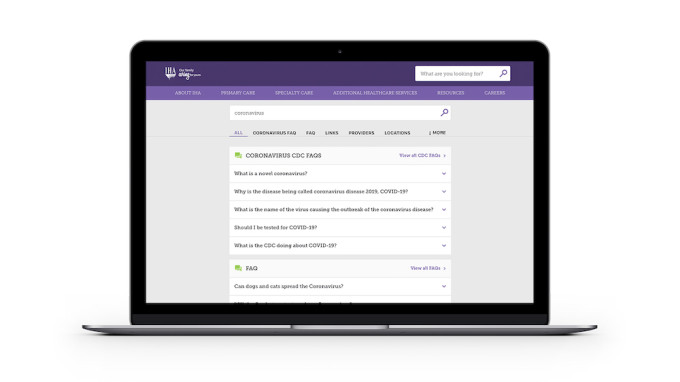CRM software accounts for one-quarter of all enterprise IT spend. But ironically, while a lot of money is spent on platforms like Salesforce or SAP to manage incoming calls and outgoing marketing and sales activity, not a lot of attention is given to the issue of how to help the teams using all that software work better.
What are the peak times for calls? What are the most common questions? Which staff are best skilled at what kinds of questions? And who is actually working at any given time? These are just some of the issues, but in many cases, there isn’t much in the way of tools used to help with these at all — organisations often just hack a spreadsheet platform like Google Sheets or a calendar app to get by, or do nothing at all.
Today, a startup called Assembled is coming out of stealth mode to address that gap in the market, with a platform that’s built specifically to address the kinds of questions and issues that customer support teams encounter and — answered well — can help them work much better.
Out of the gate, Assembled is announcing $3.1 million in seed funding led by Stripe — where the founding team previously worked — with participation also from Basis Set Ventures, Signalfire and several angel investors (who are also mostly former Stripe employees).
Assembled’s longer-term ambition is to build tools for what co-founder Ryan Wang describes as “the logistics of customer support.”
“We want to become the operating system for support teams,” he said. Most immediately, the company’s focus will be on agent performance. “Teams want to learn about their top performers and how they spend their time, and offer data to empower their decision-making.”
Stripe — the payments and related services provider that is now valued at $35 billion — has developed a sizable operation funding startups adjacent to its own interests in cultivating relationships with startups and other smaller businesses. You could consider it a strategic investor in Assembled: alongside Grammarly, Gofundme, Hopper and Harry’s, Stripe is one of Assembled’s marquee customers.
Wang, an ex-Stripe engineer who co-founded Assembled with his brother John and Assembled’s CEO Brian Sze (both also ex-Stripe), said in an interview that the idea for the startup came directly out of the pair’s experiences as early employees at Stripe.
The approach at the startup in its early days was very grass-roots: employees would get together outside the office to go through support tickets as a way of identifying trends and to talk through them to figure out what might need fixing, how to handle issues in the future and so on.
It was probably a great way for the team to really stay in touch with what customers needed and wanted. But eventually this approach presented a problem: How do you scale this kind of process? To a tech person, the solution would be obvious: build a platform that can help you do this.
“Within the landscape of CRM, we could see that tech hadn’t really been applied to the business of supporting customer support,” Wang said. “That is why we left. We’d understood that it was a broad problem.”
A tool to help improve workforce management for customer support teams is a no-brainer for a company already trying to address these issues through its own home-baked solutions. Wang noted that one of its current customers had built out such an extensive map of data on Google Sheets trying to address customer support workforce management that “they broke Google Sheets. It was just too big.”
Indeed, Bob van Winden, Stripe’s head of operations, noted: “Millions of businesses rely on Stripe every day. To support them, we obsess over every detail of delivering fast, reliable customer service, including free 24×7 phone and chat support. This led us to Assembled, which our global support teams are using to stay coordinated and focused on helping Stripe’s users thrive.”
Less obvious is the use case when a company has never identified these issues, or sees them but haven’t made efforts to try to solve them because it seems too difficult. (The classic issues here are that Assembled is “too clever by half,” or “too ahead of its time.”) That presents both an open market for Assembled, but also a greenfield challenge.
One route to customers has been to integrate with more established CRM packages. Currently Assembled integrates with Salesforce, Kustomer and Zendesk, so that it can source data from these to provide more insights to users.
Another is to provide a set of tools that speak to the wider trend for analytics and data-based insights that can be used to improve how a company works. Indeed, just as Kustomer has disrupted the idea of a CRM being focused on a narrow funnel of inbound requests, Assembled also is rethinking how to parse data to figure out what a customer support person should be doing and when.
The startup provides a way to forecast inbound support query volumes, and to map that into staffing plans that cover multiple channels like chat, email, phone and social media. The staffing plan, in turn, also acts as a scheduling tool to set up group and single calendars for individuals.
A team’s activity, meanwhile, is tracked through a set of metrics the whole team can see and use to calibrate their work better.
Going forward, you can imagine Assembled expanding in a couple of different directions. One might be to offer workforce management to more teams beyond customer support, but that also have to work out how to manage inbound requests and turn them into more efficient work plans. Another might be to continue expanding the kinds of tools it might provide to customer support teams to continue complementing basic CRMs, in particular as customer support comes to mean different things, depending on who the “customer” actually is.
“We see the term ‘customer support’ evolving,” Wang said. “The big struggle is what the encompassing term should be instead. Generally, our view is that we want to transform and elevate what customer support means. It’s not just about call centers, but any drivers of customer experience related to your products.”


![]()



